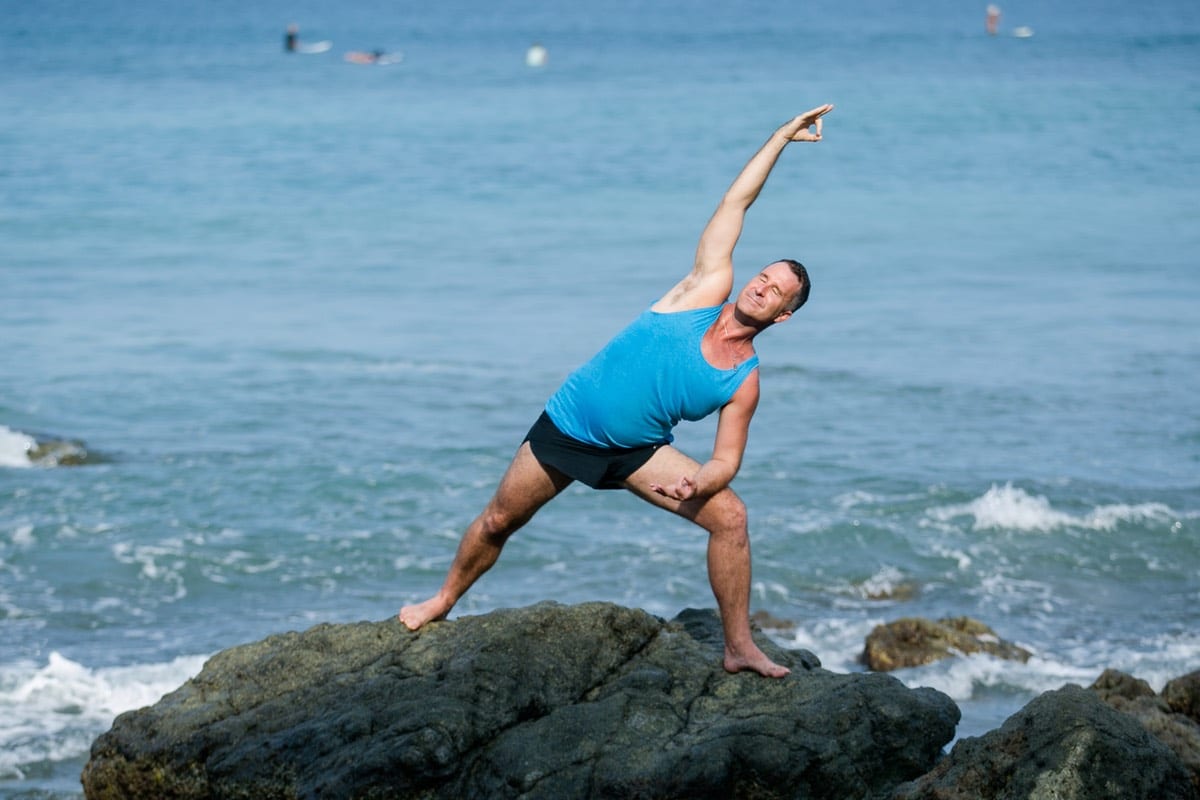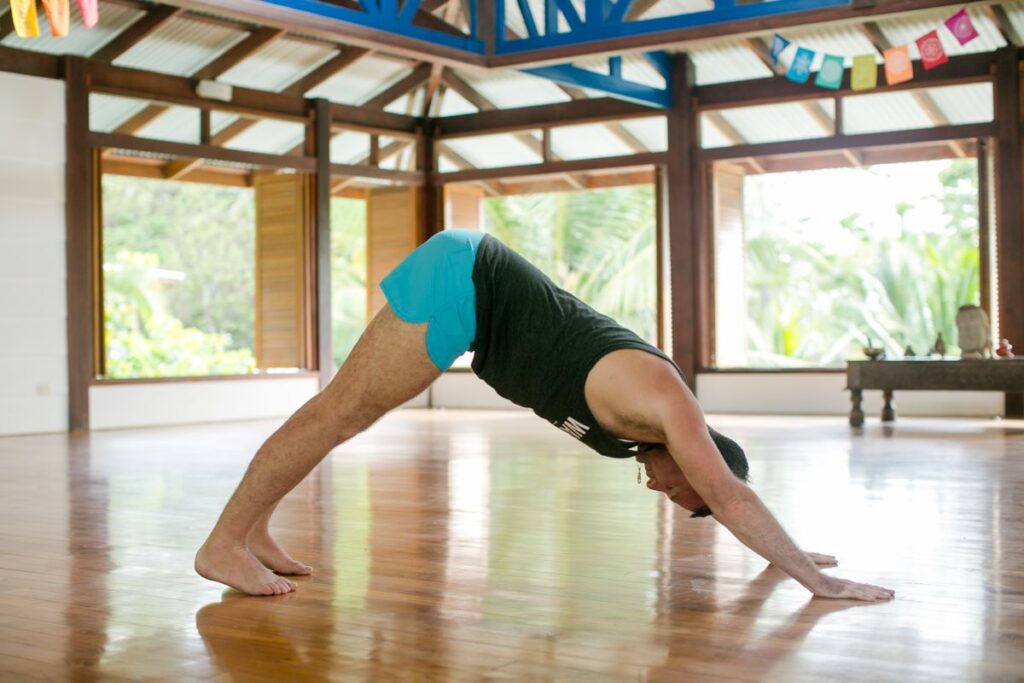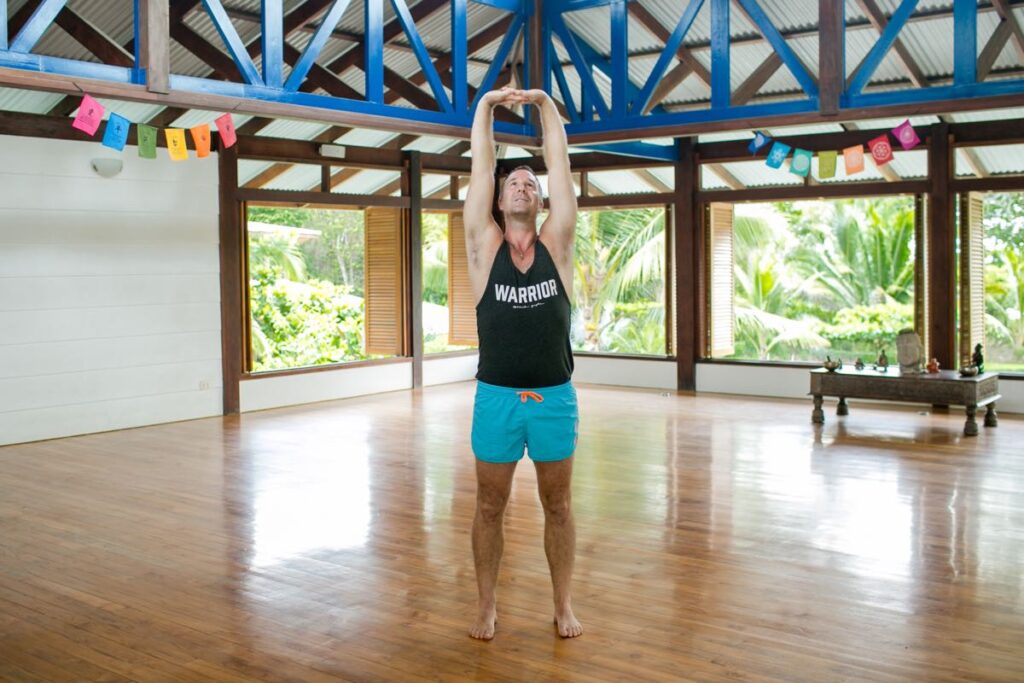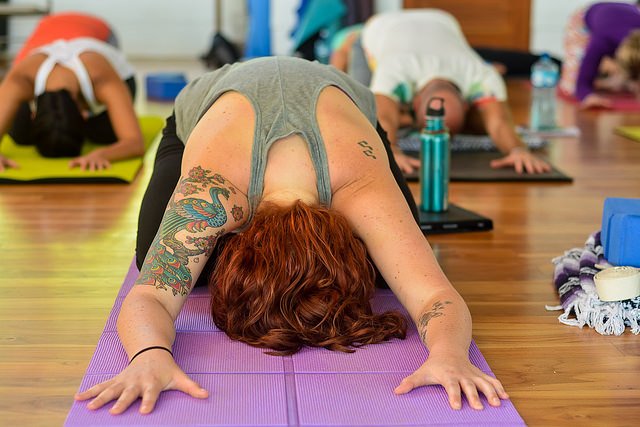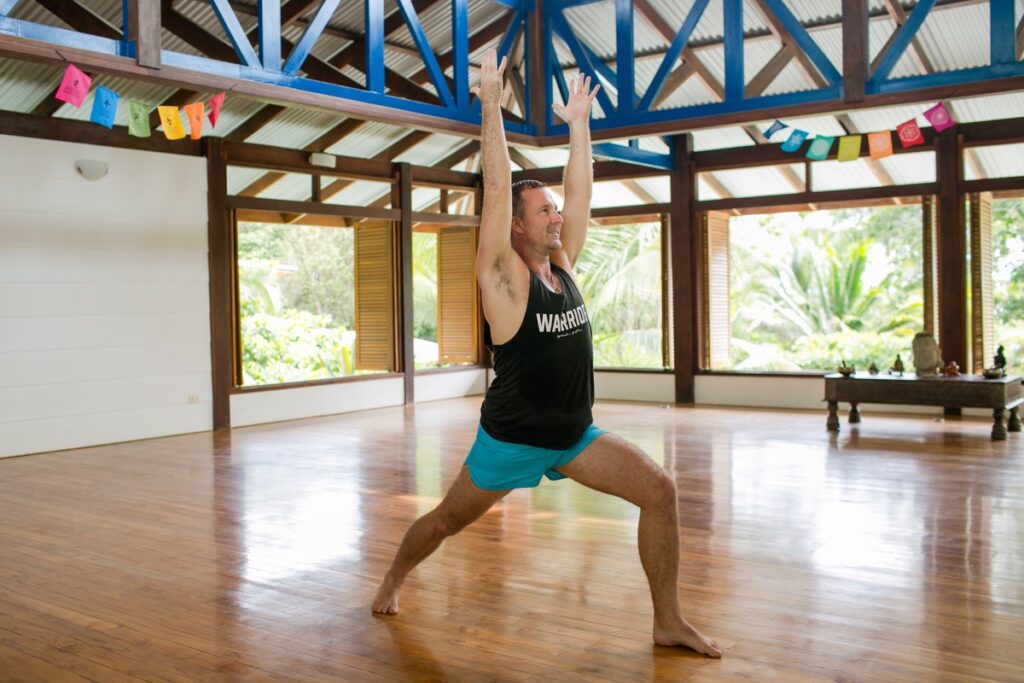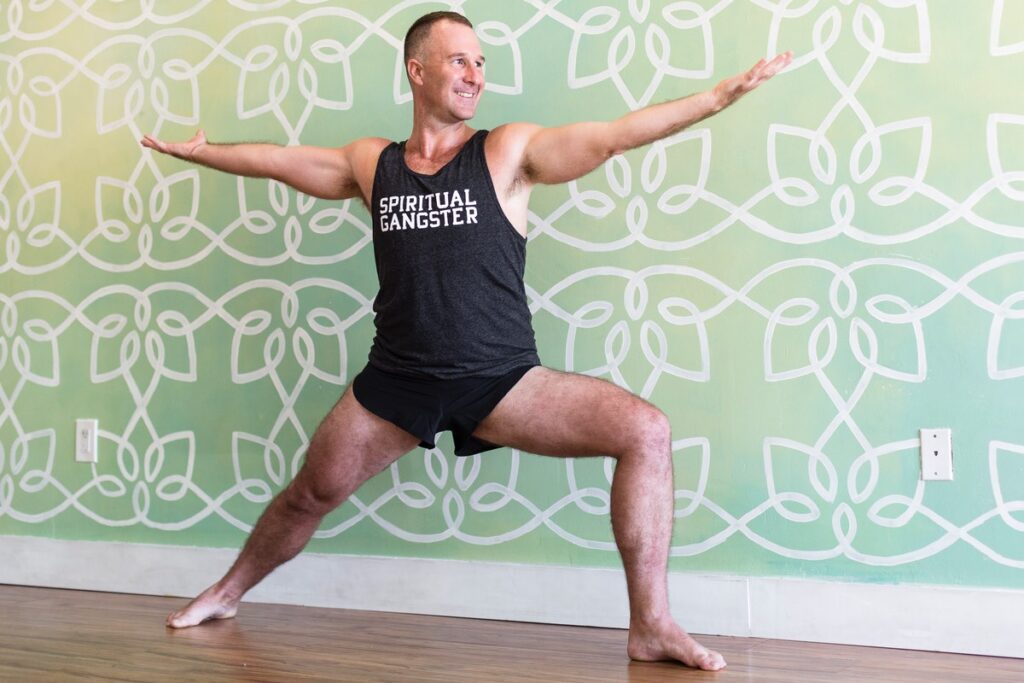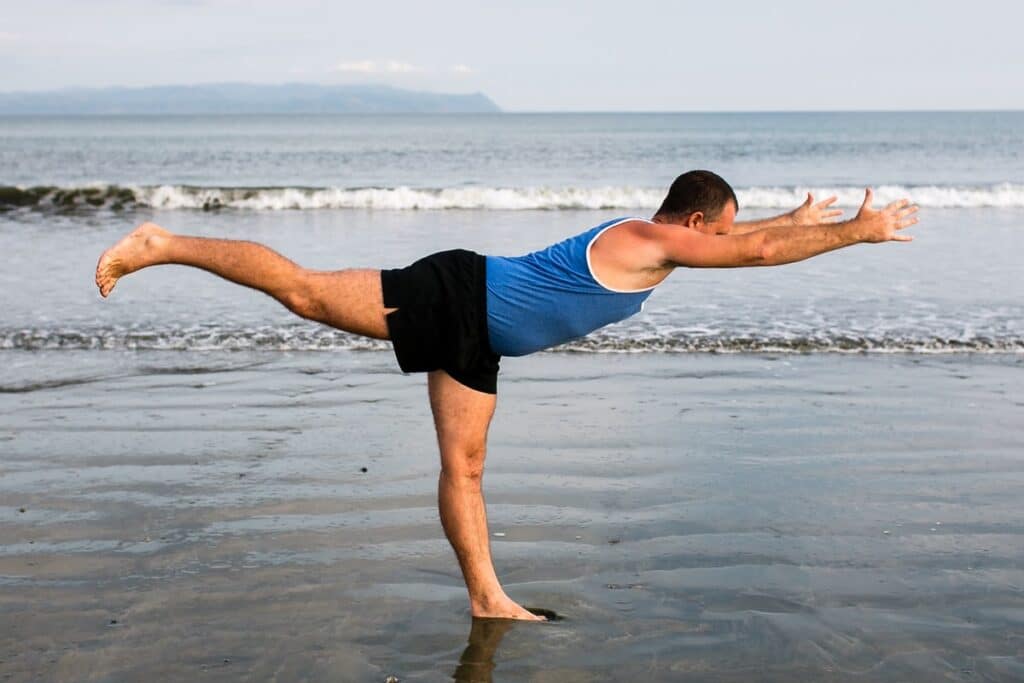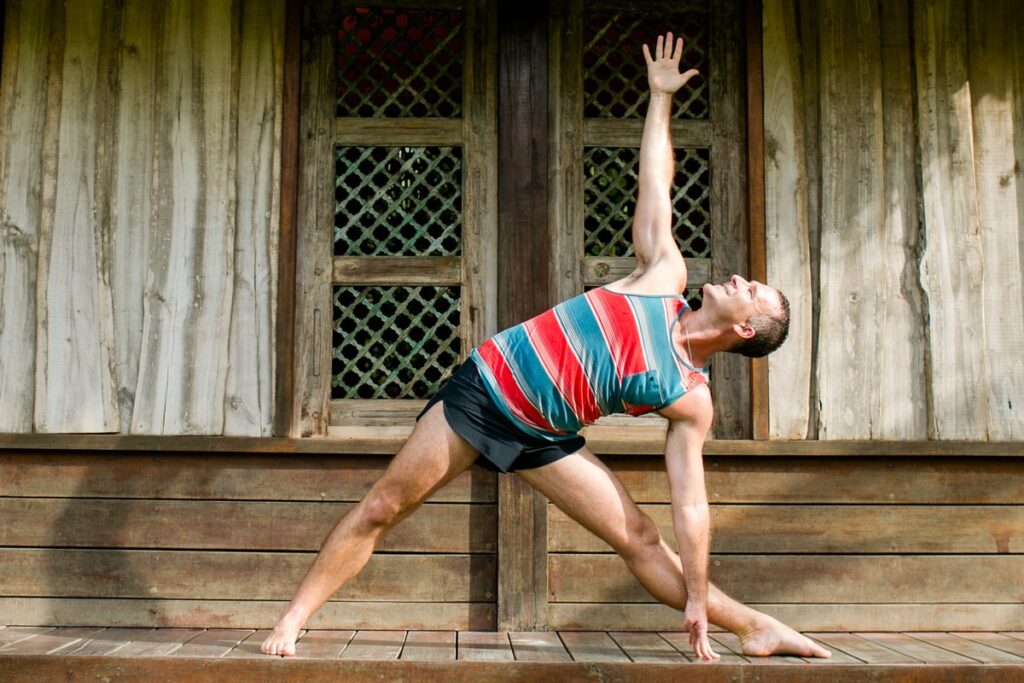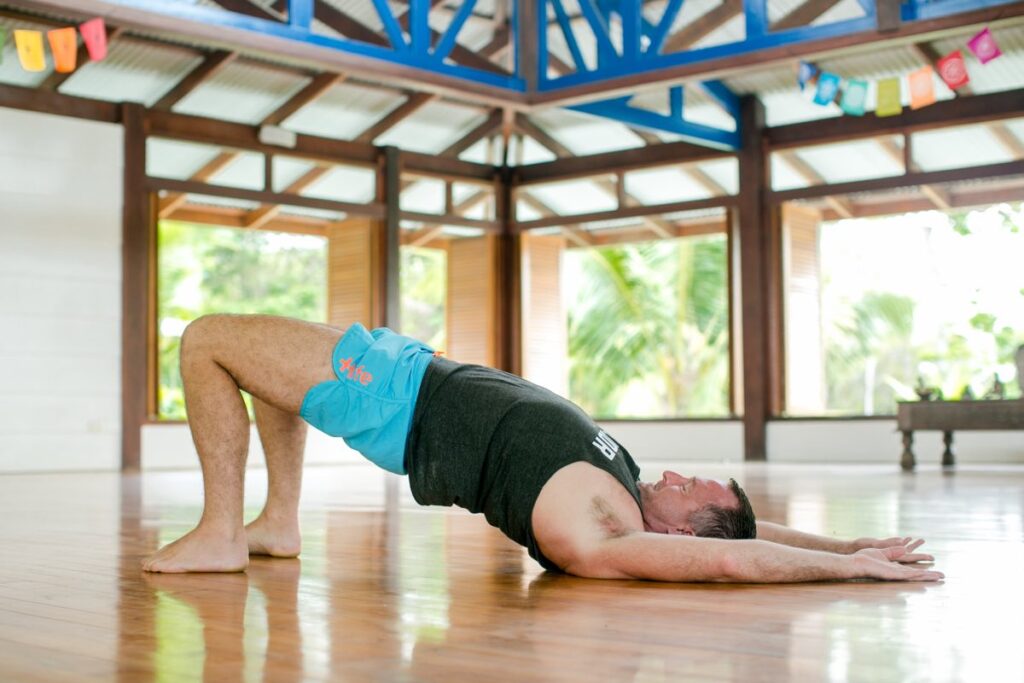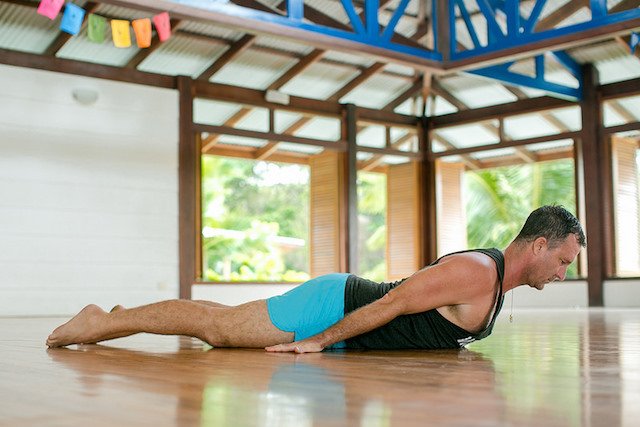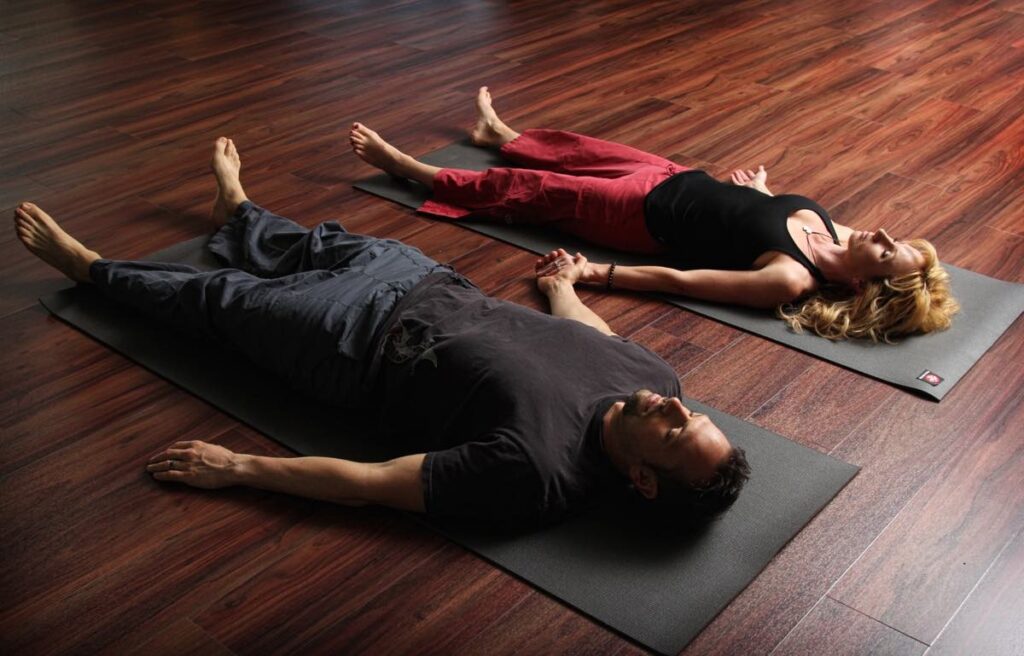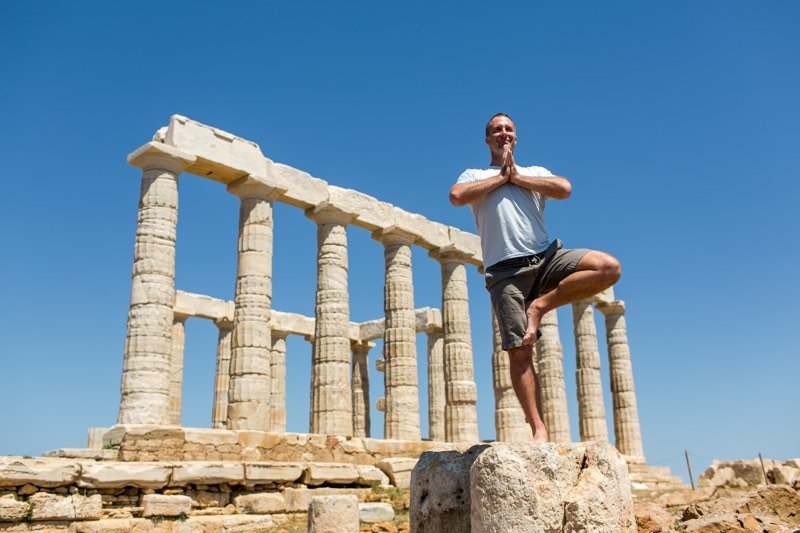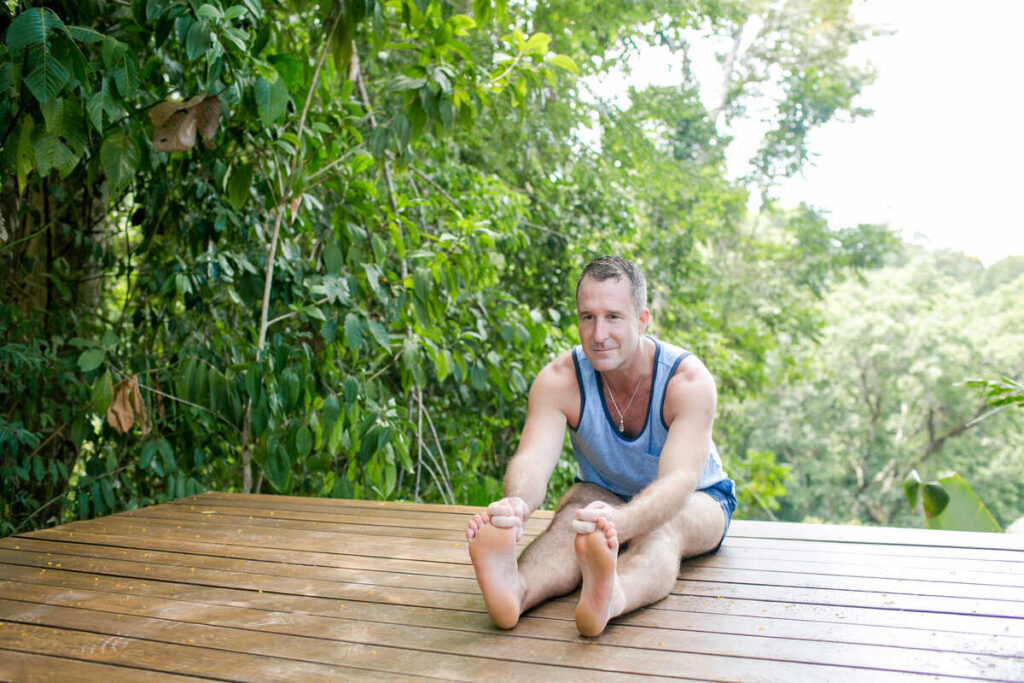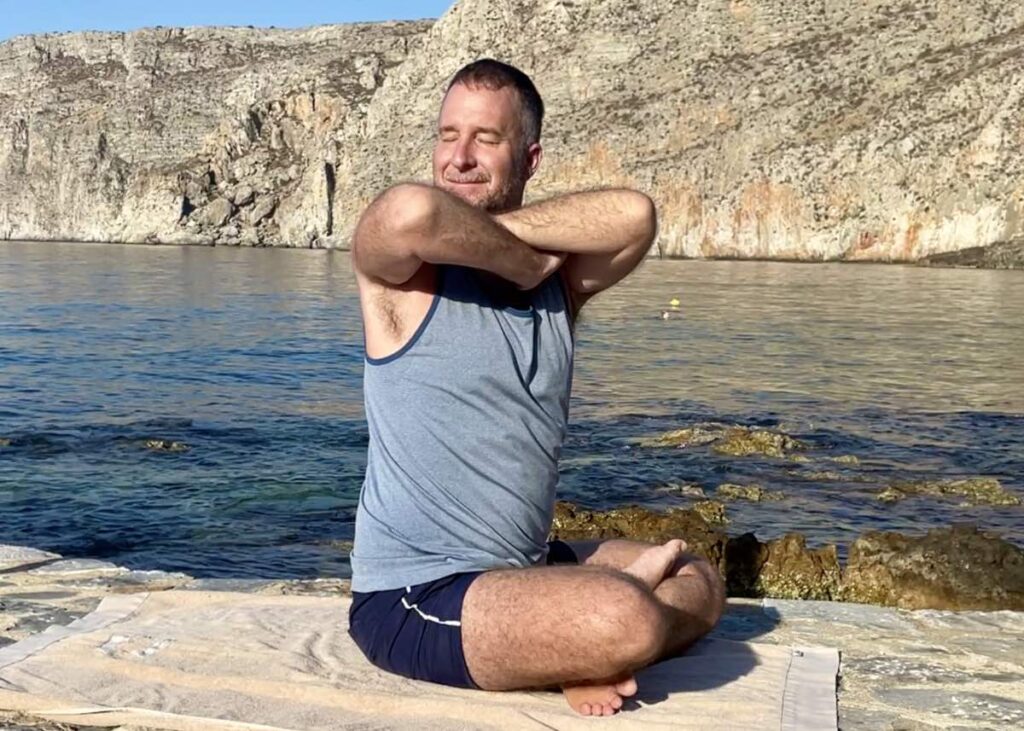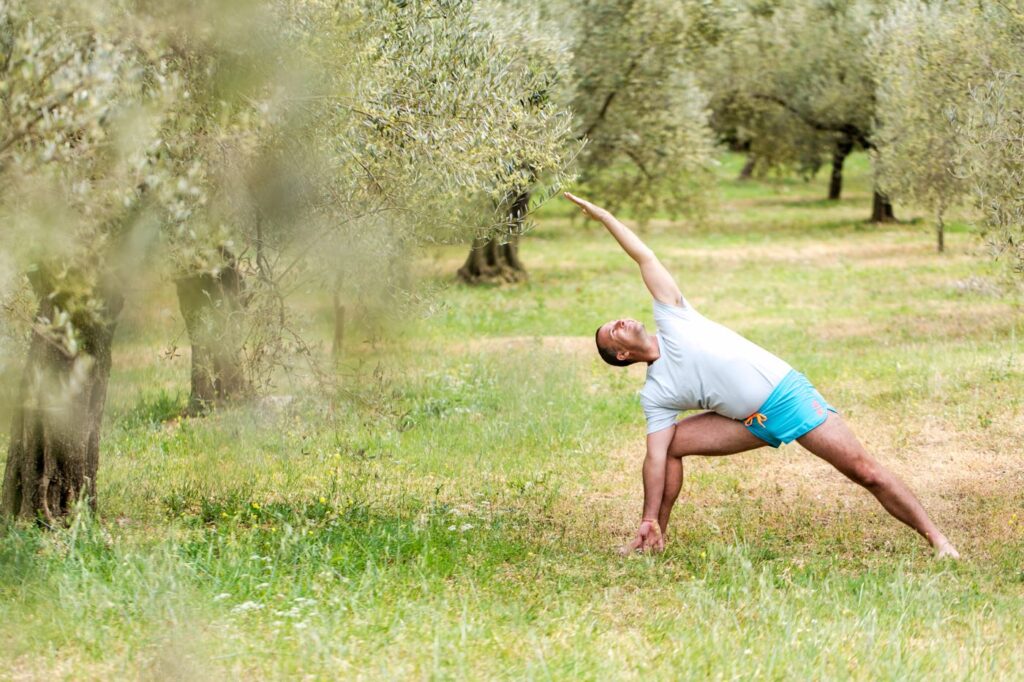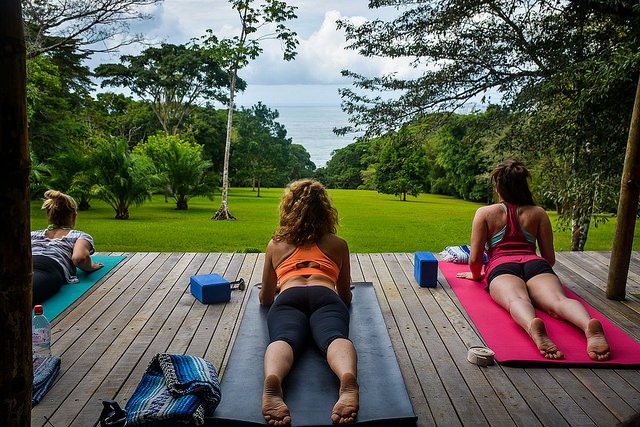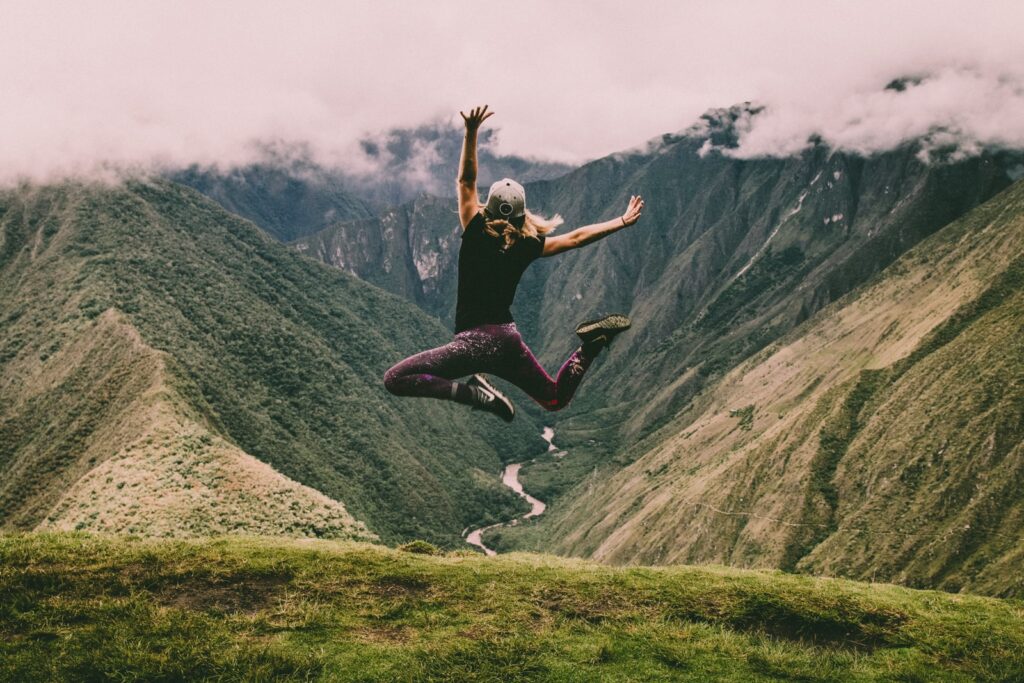Ready to discover the top yoga poses for beginners? Trade confusion for confidence with these easy-to-learn beginner yoga poses.
There’s no secret to it: If you want to realize the mental and physical benefits of yoga, you must roll out your mat and begin.
There’s just one problem…
If you’re a yoga beginner, getting started is often easier said than done.
Maybe your local studio is intimidating, a flurry of fit twenty-somethings sipping green juice and flipping into handstands before class. Or perhaps you downloaded an online yoga flow, only to spend the entire hour struggling to follow along from awkward, uncomfortable positions.
I get it. I was once a yoga beginner, too. And I vividly remember those early days of overwhelm and confusion, wondering if I’d actually achieve a headstand if I only kept practicing (as my teachers promised.) Spoiler — it’s true: practice and all is coming.
Now, let me say this:
Young or old, fit or inactive, flexible or stiff…
…yoga is for you.
The truth is, yoga isn’t an exercise at all. The purpose of yoga is to integrate the mind, body, and spirit — to quiet the mind, so we become more aware of our true nature.
If you can breathe, you can practice yoga for beginners — and you can reap the total mind-body-spirit benefits, too.
Now, if you’re just getting started, it’s helpful to understand a few basic yoga poses for beginners. These are the building blocks of many yoga flows; practice these postures, and you’ll soon find grace and ease in your beginner yoga practice. Let’s dive in.
15 Best Basic Yoga Postures for Beginners
Let’s explore the best yoga poses for beginners, so you avoid pesky injuries — and create the foundation for a rewarding yoga practice.
1. Downward Facing Dog
Perhaps the most iconic of beginner yoga poses, Downward Facing Dog packs a powerful punch. It strengthens the arms and shoulders while lengthening the spine and hamstrings. It quiets the mind and restores the body. And, with consistent practice, Downward Facing Dog can even provide relief from:
- Headaches
- Sleep disorders
- Exhaustion
- Mild depression (Note: Yoga is a complement to — not a substitute for — professional mental health support.)
There’s a lot that goes into this foundational posture. So, read our ultimate beginner’s guide to Downward Facing Dog here. You’ll learn how to safely practice and modify the pose based on your unique needs.
2. Mountain Pose
At first glance, this simple standing posture might not look like much. However, I’d argue that Mountain Pose is one of the most essential beginner yoga poses to practice.
It helps to know the Sanskrit name for Mountain Pose is Samasthiti. “Sama” means balanced; “Sthiti” means steadfast. So, this pose is a call to action to find both strength and stillness in balance.
I recommend closing your eyes the first few times you practice Mountain Pose. Feel your feet rooting into the ground beneath you as you lengthen towards the heavens. Allow your chest to expand and your heart to open to any infinite number of possibilities. Finally, don’t forget to smile!
3. Child’s Pose
When it comes to yoga for beginners, I’d be remiss not to mention Child’s Pose. That’s because this gentle and calming pose releases tension in the lower back, hips, and thighs while grounding and refocusing your attention. If you lose connection to your breath at any time during practice, give Child’s Pose a try.
Now, if you suffer from back pain, it’s crucial to practice Child’s Pose with the right modifications and support — otherwise, this popular yoga pose might do more harm than good!
There’s a simple reason why this famous yoga pose is so dangerous: your hip flexors.
Stability in the hip flexors is crucial to our physical health — yet many of us are doing the exact opposite of what we should be doing.
So, before you begin practicing child’s pose, start with my short series on how to live pain-free. Since I created this game-changing program, I’ve witnessed students heal long-standing injuries and access yoga postures they never thought possible.
If you’re ready to become pain-free, this is the series for you. No one else is teaching this stuff, and I guarantee this revolutionary approach to yoga poses for beginners will help you feel and live better!
4. Warrior I
Build power, focus, and stability as you embrace your inner warrior — and calmly tackle any challenge life throws your way.
Named after the Hindu warrior Virabhadra, Warrior I is my go-to whenever I need to improve my concentration, focus my mind, and clarify my purpose.
Plus, Warrior I is a full-body posture that stretches and strengthens through the legs, torso, and upper body while toning the core. Getting the alignment right can be tricky, so start with this Warrior I tutorial.
5. Warrior II
Continue creating strength in all areas of your life with Warrior II, another excellent beginner yoga pose to improve stability and alignment. A few breaths in this hip-opening yoga posture might have your legs shaking — and that’s a good thing!
With your feet about four feet apart, point your front foot forward while placing your back foot at a 45-degree angle. Keep the head and torso aligned over your hips as you raise your arms parallel to the ground. Bend into your front knee and sink into the hips, firing the back leg toward the sky. Calmly gaze forward and remember — you are a warrior!
6. Warrior III
Polish off your knowledge of the Warrior poses with Warrior III. You’ll strengthen your glutes and thighs while improving your balance and alignment.
Start in Warrior I. Lengthen through the torso as you begin to lean over the front thigh. Keep the hips parallel to the floor as you extend your arms in front of you. Keep your gaze forward and your core engaged as you lift your back leg off the floor, eventually bringing it parallel with the floor.
When it comes to yoga poses for beginners, Warrior III is tricky. Your standing ankle is rooting down into the mat beneath you, yet your back leg is lifting and expanding. It’s a subtle dance that builds concentration and mindfulness. Yoga doesn’t have to be so serious, so have fun as you play with the posture.
Tip: Rest your hands on the yoga blocks or a chair to find stability and length in the body.
7. Triangle Pose
If you’re looking for a powerful beginner yoga pose to stretch and strengthen the entire body, Triangle Pose is the answer. Triangle Pose improves the mobility of the spine and the side body while releasing fascia surrounding the lungs. Plus, it strengthens the ankles, legs, core, and hips.
Feeling stressed and anxious? Triangle Pose can help with that, too. That’s because this posture calms the mind so that we can expand into new possibilities.
Watch this in-depth Triangle Pose Tutorial and discover the physical and emotional benefits of the pose today.
8. Bridge Pose
Ah, Bridge Pose. Anyone who has taken an Applied Yoga Anatomy class with me knows that Bridge Pose is a must-have tool in any yoga arsenal.
Listen…
If you struggle with lower back pain, the problem is rarely in your lower back. The issues are coming from somewhere else; often, that “somewhere” is our glutes.
The glutes are crucial in taking stress off the spine during movements by acting as a shock absorber. If the glutes aren’t working correctly, rotational pressure transfers to the lumbar spine and creates pain.
Even if you don’t have pain now, strengthening the glutes is crucial to long-term health and mobility. So, you can see why I love Bridge Pose!
View the full breakdown of this yoga pose for beginners in my online course: Why you should practice alignment.
9. Locust Pose
Another top pose for relieving back pain? Locust pose. This gentle backbend strengthens the back muscles, aids digestive issues, and even relieves gas, constipation, and indigestion. Plus, since we’re working the upper back muscles, it can also improve posture and reduce stress caused by slouching. If you find yourself slumped over your computer all day, this is the pose for you!
Locust Pose seems simple: Lie on your stomach with your arms resting at your sides, palms toward the ceiling and forehead on the floor. Using the breath, lift your head, torso, arms, and legs in unison. Try to keep the big toes touching. Focus your gaze ahead as you lengthen the back of your neck.
10. Corpse Pose
It’s tempting to skip Corpse Pose (more often called Savasana), the relaxation posture that ends every yoga class. But if you find yourself thinking, I’m too busy to nap at the end of class, then you might need Savasana more than you realize.
Here are just a few of the benefits of Savasana:
- Calms the central nervous system
- Reduces stress and anxiety
- Helps to lower blood pressure
- Aids digestion and improves the immune system
Once you incorporate Savasana into your list of yoga poses for beginners, you might even find it becomes your favorite part of the class! So, lie on your back and allow your body to fully release onto the mat beneath you. Integrate the lessons from your beginner yoga class, and then notice how you feel.
11. Upward Facing Dog
Upward Facing Dog is a must-learn beginner yoga pose, mainly because it’s part of the Sun Salutation sequence. This excellent back-bending posture strengthens the back muscles, improves spinal mobility, and opens through the heart and chest.
Press the tops of the feet and palms into the mat as you lift the chest, chin, and legs to come into a backbend. If this is too much, try Cobra Pose. Keep the legs and hips on the mat, and only lift the chest. Try to minimize the weight on your hands, using the back muscles to come into the posture.
12. Plank Pose
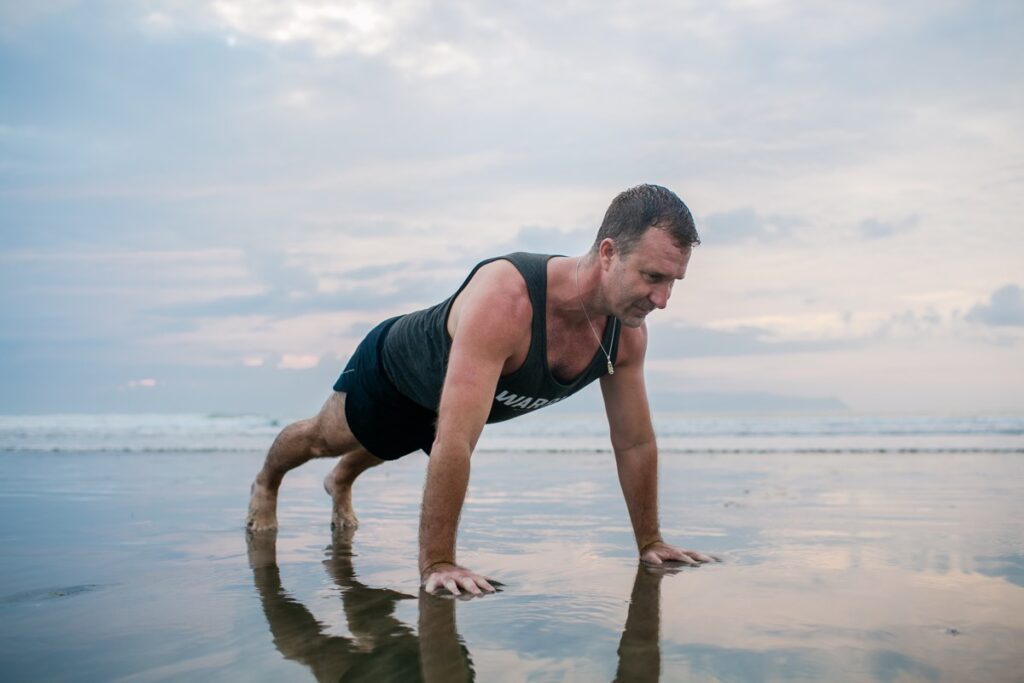
Another foundational yoga for beginners pose, Plank is a fabulous way to tone and strengthen the entire body — especially the core and arms.
You’re likely familiar with Plank Pose, but are you confident in your alignment?
If you want to practice beginner yoga poses safely, alignment matters. A common mistake with Plank Pose is to raise the hips too high or too low or to place too much weight in the heels.
Even if you think you’re familiar with Plank Pose, I recommend reviewing my top alignment tips to practice Plank Pose safely.
13. Tree Pose
I hear it time and time again: I’m just not any good at balancing!
Well, do you know the best way to improve your balance? Practice standing on one leg! Not only is Tree Pose an excellent introductory balancing posture, but it also strengthens the ankles, calves, and core.
Slowly lift one leg and place it on the opposite ankle, calf, or thigh (avoiding the knee area.) Use your inhale to elongate through the spine and your exhale to root into the ground beneath you. Hands can come to prayer pose or lift up overhead. Don’t be afraid to use a wall or chair for added stability while you’re starting out.
If you want to lower your risk of injury and improve joint stability, incorporate at least one balancing posture into your yoga for beginners’ practice. Tree Pose is a smart and gentle way to begin.
14. Seated Forward Fold
We live in a stressful world. Many of us spend the day darting from one place to the next, struggling to balance work, family, friends, and household duties. So, it’s hardly any wonder we get sick or feel ongoing anxiety!
Forward folds are yoga poses for beginners that are an easy way to calm the nervous system and relax the mind while lengthening the hamstrings and releasing tension in the lower back.
If you’re just getting started, try a Seated Forward Fold. Flex the feet and engage the thighs and core as you fold over your legs. Use a bolster or pillow under your torso for added support and comfort.
15. Seated Twist
No list of beginner yoga poses is complete without at least one twist. That’s because twists help the body find balance and stillness. Exhausted? Twists will energize you. Struggling with concentration? Twists will ground you. In other words, they give you precisely what you need — when you need it.
Another benefit of twists is that they increase digestive fire and improve spinal mobility.
Ready to give twists a spin? 😁 Read my complete guide to seated twists here.
The bottom line
If you’re ready to experience the life-changing benefits of yoga, these 15 essential yoga poses for beginners are an excellent place to start.
Sometimes, though, we all need a little guidance…
…and there’s no better way to supercharge your yoga practice than with a custom retreat in one of the most biodiverse places in the world.
Immerse yourself in the Blue Osa yoga experience
Get the one-on-one support you need to learn how to safely practice yoga — and return home with knowledge and skills you can turn to no matter what life throws your way.
Farm-to-table cuisine, abundant wildlife, an ocean view yoga studio, and choose-your-own jungle adventures are all just added bonuses.
Learn more about our private yoga for beginners retreats here and start curating the vacation of your dreams.
About Yogi Aaron

Yogi Aaron is the owner, operator, and lead yoga facilitator at Blue Osa and of the yoga teacher trainings.
Creator of Applied Yoga Anatomy + Muscle Activation™ Yogi Aaron brings three decades’ worth of study, mentorship, and experience into his teachings, with a strong emphasis on yoga therapy and alignment.
The Muscle Activation Yoga Classes is an exploration into your body, its muscles, and to learn how to improve its function through using Applied Yoga Anatomy + Muscle Activation™.
Find out more about yoga teacher trainings with Yogi Aaron at Blue Osa Yoga Retreat + Spa.


